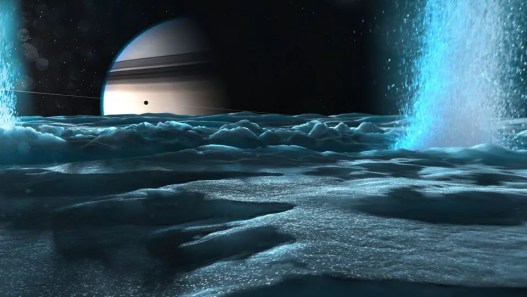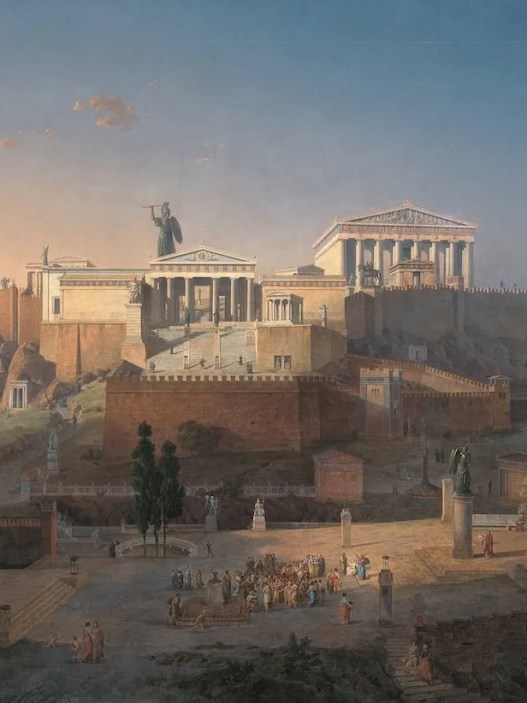Imagine discovering a perfectly preserved ancient Roman spa three meters beneath the Mediterranean waves, complete with heated floors, intricate mosaics, and quite possibly the personal bathhouse of one of history’s most famous orators. Well, that fantasy just became reality off the coast of Naples, Italy, where marine archaeologists have uncovered what might be the crown jewel of underwater archaeology.
The discovery has sent ripples through the archaeological community and captured the imagination of history enthusiasts worldwide. This isn’t just any ancient bathhouse. Experts believe it could be the long-lost villa of Marcus Tullius Cicero, the legendary Roman politician whose words still echo through law schools and philosophy classrooms today.
The Vegas of the Ancient World
To understand the magnitude of this find, you need to know about Baiae. Picture the most exclusive resort destination you can imagine, then multiply that by the entire might of the Roman Empire. That was Baiae during its heyday, a coastal playground where Rome’s elite came to see and be seen, indulge in thermal springs, and engage in activities that would make modern Vegas blush.

This wasn’t your average Roman town. Baiae earned the colorful nickname “harbor of vice” from contemporary writers who documented the legendary debauchery that took place within its luxurious villas. The Roman poet Sextus Propertius famously called it a “vortex of luxury,” and when Romans thought something was over the top, you knew it was truly spectacular.
Julius Caesar relaxed here. Augustus held court from its terraces. Nero probably composed his terrible poetry while soaking in its famous thermal springs. The guest list read like a who’s who of ancient power brokers, from military generals like Pompey the Great to wealthy patricians seeking both pleasure and political connections.
A City Swallowed by Time
The tragic irony of Baiae’s story is that its very location, which made it so desirable, ultimately sealed its fate. Built on the volcanic Phlegraean Fields near Naples, the resort town was blessed with natural hot springs that were considered to have miraculous healing properties. But living on an active volcanic system comes with risks that even Roman engineering couldn’t overcome.
Between the 16th and 18th centuries, volcanic activity and seismic shifts gradually pushed much of the city beneath the waves. What had once been grand villas with sweeping views of the Bay of Naples became an underwater ghost town, its streets and buildings preserved in an aquatic time capsule.
The submersion happened slowly enough that residents had time to evacuate, but not slowly enough to save the incredible architecture and artwork that defined this unique corner of the ancient world. By 1500 CE, a combination of volcanic subsidence and malaria outbreaks had rendered the once-mighty resort completely abandoned.
The Detective Work Begins
Fast forward to 2023, when underwater archaeologists first spotted something extraordinary during routine surveys in Zone B of what is now the Baia Underwater Park. Three meters below the surface, they discovered the outline of what appeared to be a remarkably well-preserved Roman bathhouse. But it wasn’t until recently that the full extent of this incredible find became clear.
The bath complex they uncovered is a masterpiece of Roman engineering. At its heart lies a laconicum, essentially an ancient sauna that showcases the sophisticated technology Romans had developed for luxury living. The mosaic floor remains completely intact, still supported by the original pilae of the suspensurae system that allowed hot air to circulate beneath the surface.
This wasn’t just about staying warm. The heating system included hollow tiles in the walls called tubuli, creating an even distribution of heat that would make modern spa designers jealous. It’s the kind of advanced climate control that demonstrates just how seriously Romans took their relaxation time.
Artistic Treasures Beneath the Waves
What makes this discovery truly special isn’t just the engineering. Traces of ancient wall paintings still cling to the bathhouse walls, offering a rare glimpse into the artistic tastes of Rome’s upper class. These frescoes, though fragmentary after centuries underwater, hint at the richly decorated interiors that once graced every surface of elite Roman leisure spaces.
The intact mosaic floor is particularly remarkable. While many ancient mosaics have been damaged by time, weather, and human interference, this one has been protected by its underwater environment. Marine archaeologists describe it as being in exceptional condition, with the intricate patterns and colors still clearly visible through the crystal-clear Mediterranean waters.

Ceramic materials recovered during the excavation are currently being analyzed by experts who hope these fragments will reveal crucial information about when the complex was built and how it met its watery end. Each piece of pottery is like a page from an ancient diary, potentially holding clues about daily life in this underwater palace.
The Cicero Connection
Here’s where the story gets really exciting. Historical records suggest this bath complex may have been part of Cicero’s villa, and if confirmed, it would be the first physical evidence ever found of the great orator’s private retreat.
Cicero wasn’t just any Roman politician. He was arguably the greatest public speaker in Roman history, a philosopher whose ideas influenced centuries of Western thought, and a master of political intrigue who lived through some of the most turbulent times in Roman history. His letters and speeches provide some of our best insights into daily life in the late Roman Republic.
Like other members of Rome’s elite, Cicero was drawn to Baiae for both its luxury and its strategic location. The resort offered the perfect combination of relaxation and networking opportunities, where political deals could be struck between sessions in the thermal baths and elaborate dinner parties that lasted until dawn.
The potential connection to Cicero adds layers of historical significance to an already remarkable discovery. This wasn’t just any wealthy Roman’s vacation home. This could be where one of history’s most influential thinkers retreated to write, think, and plan the speeches that would shape the course of Western civilization.
Modern Treasure Hunters
The rediscovery of Baiae began in the 1920s when intact marble sculptures were found during routine dredging operations. The discovery was so significant that Benito Mussolini actually suggested draining the entire area to uncover the rest of the ancient city. Fortunately for marine archaeologists and divers today, that plan never came to fruition.
In the 1940s, an Italian air force pilot flying over the area spotted what he described as a “strange ghost town” beneath the waves. His aerial photographs helped map the extent of the underwater ruins and sparked serious archaeological interest in the site.
Today, the submerged city has become one of the Mediterranean’s most unique tourist destinations. Certified divers can explore streets where Roman senators once strolled, swim through villa courtyards where emperors held court, and marvel at mosaics that have been perfectly preserved by their underwater environment.
For those who prefer to stay dry, glass-bottom boats offer spectacular views of the underwater ruins. The clarity of the water in this part of the Mediterranean is remarkable, allowing visitors to see architectural details and artistic elements with surprising clarity.
Advanced Ancient Technology
What continues to amaze researchers is the sophistication of Roman engineering on display in this underwater site. The suspensurae heating system found in the newly discovered bathhouse represents technology that wouldn’t be matched in Europe for centuries after Rome’s fall.
The system worked by heating air in a furnace, then directing that hot air through the network of pillars beneath the floor and through the hollow tiles in the walls. This created an even, comfortable heat that could be carefully controlled by adjusting the intensity of the fire and the flow of air through different sections of the building.
But the Romans didn’t stop at just heating the space. The bathhouse would have featured different rooms at different temperatures, allowing bathers to experience a progression from warm to hot to cool areas. Some rooms would have been filled with dry heat, others with steam, creating a comprehensive spa experience that addressed both physical and mental well-being.
Preservation Challenges and Opportunities
Working on underwater archaeological sites presents unique challenges that land-based excavations don’t face. Everything takes longer when you’re working in diving gear, and the constant presence of marine life means archaeologists share their workspace with curious fish, crabs, and other sea creatures who have made the ancient ruins their home.
But the underwater environment has also provided remarkable preservation. While many Roman sites on land have been damaged by centuries of weather, warfare, and development, the buildings of Baiae have been protected by their aquatic setting. The lack of oxygen at the seafloor has prevented the decay that would normally affect organic materials, while the constant temperature has helped preserve delicate artistic elements.
Marine concretions, formed by minerals in the seawater, have actually helped protect many surfaces while also creating additional conservation challenges. Removing these deposits without damaging the underlying artwork requires painstaking work by specialist conservators who understand both ancient Roman construction techniques and modern underwater preservation methods.
Future Discoveries Await
Work on the newly excavated laconicum will resume this autumn, when conservators plan to clean the mosaic floor and preserve the surviving wall paintings. Each detail they uncover could help confirm the site’s connection to Cicero’s villa, potentially rewriting our understanding of how Rome’s elite lived during the republic’s final decades.
The ceramic analysis currently underway may provide the definitive dating evidence archaeologists need to confirm the historical timeline. Roman pottery styles changed frequently enough that experts can often date finds to within a few decades, and sometimes even to specific years when major political or cultural events influenced artistic fashions.
But this discovery is likely just the beginning. The vast underwater archaeological park of Baiae contains dozens of villa complexes, many of which have never been fully explored. Each represents a potential treasure trove of information about Roman life, art, and culture during one of history’s most influential periods.
A Window into Ancient Lives
What makes discoveries like this so compelling isn’t just their historical significance, but their ability to make the ancient world feel immediate and real. When you see the intact mosaic floor of a Roman bathhouse, complete with its original heating system, the gap between our modern world and theirs suddenly seems much smaller.
These weren’t just historical figures from dusty textbooks. They were real people who enjoyed luxury, sought relaxation, and gathered with friends in beautiful spaces designed for comfort and pleasure. The discovery of Cicero’s possible bathhouse reminds us that even the most serious philosophers and politicians needed somewhere to unwind and recharge.
The ongoing research at Baiae represents one of the most exciting frontiers in underwater archaeology. As technology continues to improve and new discoveries emerge from the depths, our understanding of Roman life continues to evolve. Each mosaic tile, each fragment of pottery, each surviving fresco adds another piece to the puzzle of understanding how the ancient world really worked.
For now, the waters of the Gulf of Naples continue to guard their secrets, but piece by piece, dive by dive, archaeologists are bringing the lost world of ancient Baiae back to the surface. And if they’re right about the Cicero connection, they may have found one of the most significant private residences in Roman history, preserved perfectly beneath the waves that claimed it centuries ago.
The ancient Romans believed that their empire would last forever. They were wrong about that, but in a way they couldn’t have imagined, their legacy continues to emerge from the depths, as fresh and stunning as the day it was lost to the sea.















